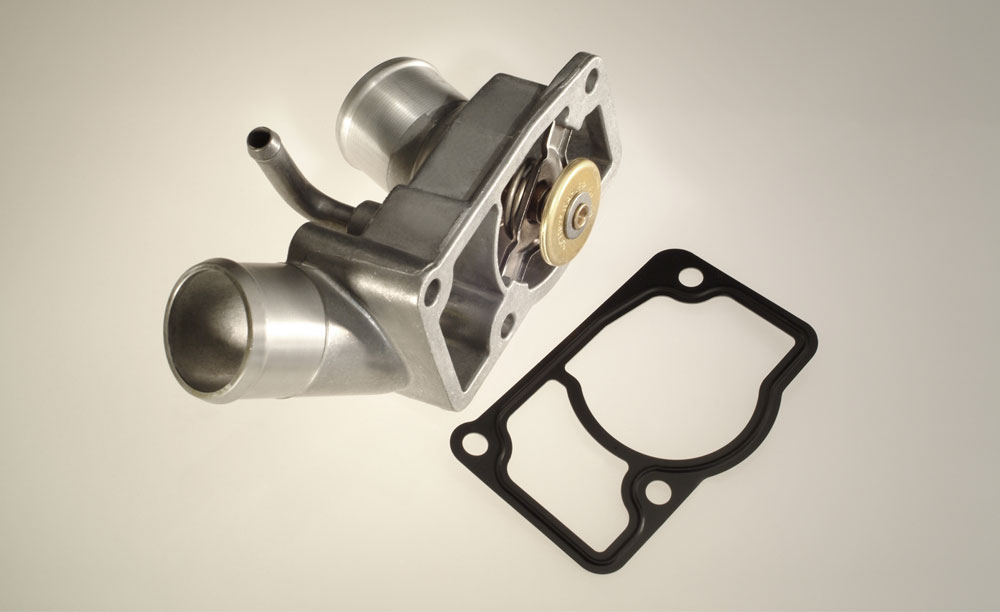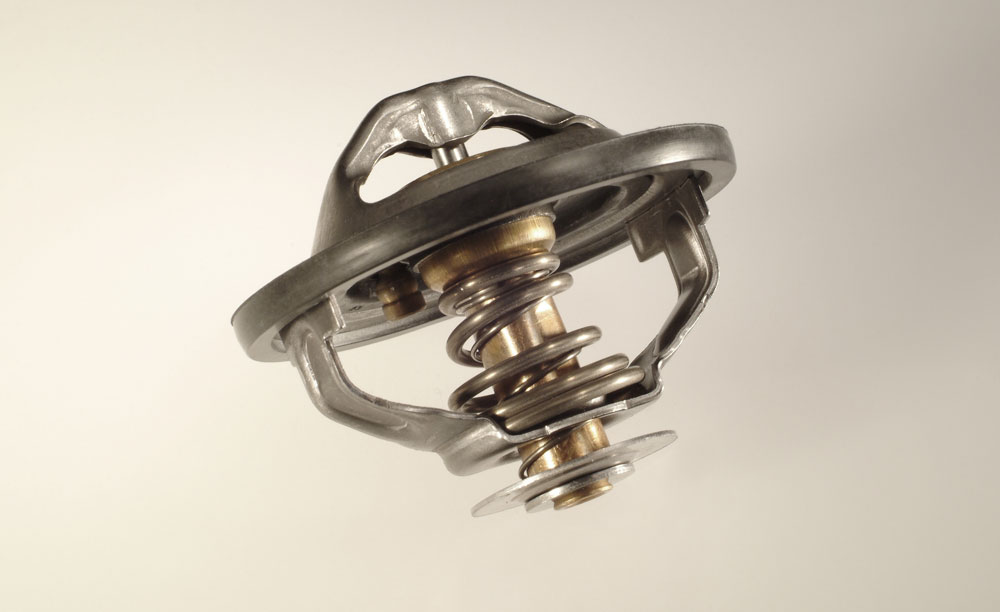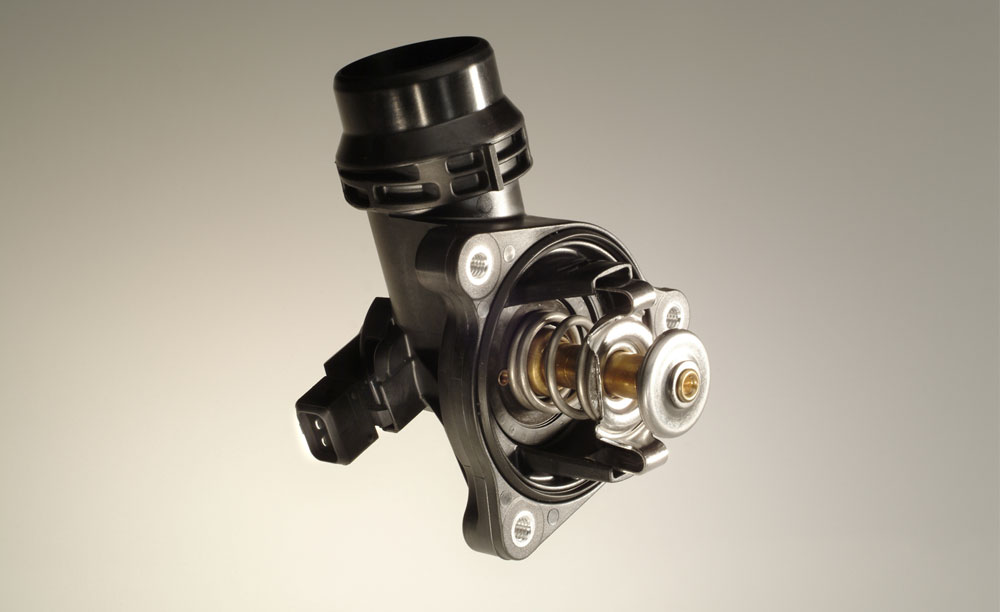Thermostat
The thermostat is an important component in liquid cooling. It ensures that the combustion engine reaches its ideal operating temperature as quickly as possible and then maintains this temperature in all operating conditions.
Function
The thermostat is an important component in liquid cooling. It ensures that the combustion engine reaches its ideal operating temperature as quickly as possible and then maintains this temperature in all operating conditions. This is an important prerequisite allowing the combustion engine to achieve optimum performance under all load conditions and emit low levels of harmful substances.
Designs
Depending on the application and technology of the combustion engine, thermostats have to exhibit different functional characteristics and ways of functioning. The following designs are used:- Cartridge thermostats (wax thermostats)
- Housing thermostats (wax thermostats)
- Electrically heated thermostats (map thermostats)
Function
- Cartridge thermostats and housing thermostats (wax thermostats)
- Electrically heated thermostats (map thermostats)
Safety
In the closed state, a faulty or blocked thermostat can cause the engine to overheat. This in turn leads to the pressure in the cooling system increasing. This can cause consequential damage to the cylinder head, the entire cooling system or even the engine mechanics. In the open state, a faulty or blocked thermostat can prevent the engine from reaching its operating temperature. Whether the thermostat is open or closed, the engine is no longer able to reach its ideal operating temperature. As a result, the fuel consumption of the engine increases and optimum combustion of the fuel/air mixture can no longer be assured. Most motor vehicles on the market have a scale indicator which informs the driver the temperature of the coolant. If the temperature reaches too high a level, the driver is warned by a symbol lighting up on the instrument cluster accordingly.
Environmental protection
Permanent regulation of the thermostat keeps the engine in an optimum temperature range at all times. It is in this range that the combustion of the fuel/air mixture will be at its best. Fuel consumption decreases and emissions of harmful substances are low. This ultimately protects both resources and the environment.
Depreciation
The thermostat is maintenance-free. It is designed to last the entire service life of the vehicle. It safeguards the low-wear and thus reliable operation of the engine. However, impurities in the coolant circuit, e.g. caused by a faulty water pump or a faulty cylinder head seal, can cause the thermostat to malfunction. Therefore, should the cooling system sustain damage resulting in impurities, as a precaution, the thermostat should always be replaced along with the associated seal.









